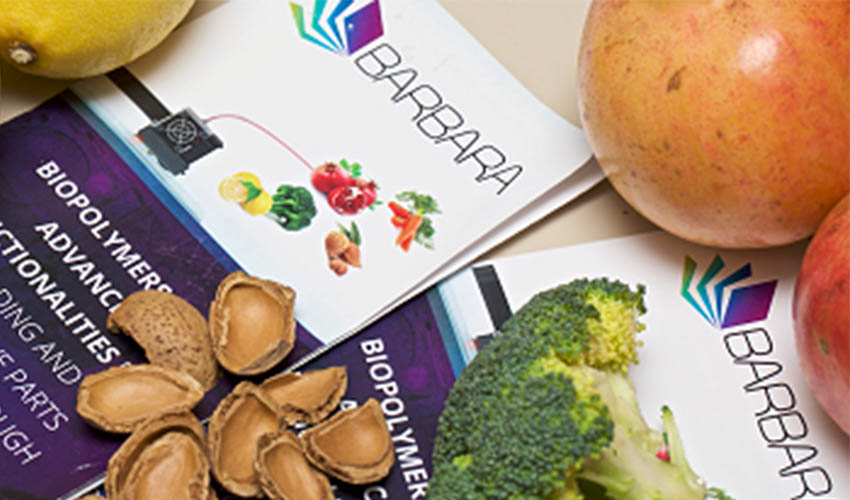The BARBARA project develops new bio-based materials for functional prototyping

In the EU, the BARBARA project, part of Horizon 2020, aims to develop new bio-based materials with innovative functionalities. These materials are designed to be used during material extrusion, otherwise known as Fused Filament Fabrication, to create parts. This project, initiated 4 years ago, has confirmed the interest from the additive manufacturing sector for more materials with new properties. In fact, this is also the segment in AM that grew the most according to the Wohlers Report. Looking at the BARBARA project in more detail, it mainly aims to promote the circular economy model of 3D printing by giving food waste and agricultural by-products a second life.
More precisely, food waste and agricultural by-products have been used to purify pigments, fragrances, reinforcing agents or biocide compounds, which are incorporated into engineered bioplastics derived from corn processing industries. These engineered bioplastics are then used in highly demanding sectors like automotive or construction for functional prototyping. Prototypes are customizable, meaning you are able to vary some properties such as mechanical and thermal strength, surface or colour appearance, fragrance release, etc. Four years after it was initiated, the European project BARBARA has achieved its goal by finishing the research and production of new high-performance bio-based materials from food which have been used to manufacture prototypes for the automotive and construction sectors.

During the course of the project, a total of eight new bio-based materials were successfully developed | Image via BARBARA project
In terms of applications, the team behind BARBARA explains that functional prototypes have been created for the automotive and construction industry. For example, in automotive, demonstrator prototypes of door handles and dashboard fascia for cars with specific colours, fragrances, surface effects and antimicrobial capacities have been 3D printed in collaboration with Centro Ricerche Fiat. Additionally, in the construction sector, moulds for resin transfer moulding and truss joint prototypes have been developed to suit the strict thermal and mechanical requirements of pieces used by ACCIONA Infrastructures.
Though its goal seemed quite ambitious, 4 years later, the development of novel bio-based engineering bioplastic materials to be validated as functional prototypes with advanced properties has been achieved. This project has received funding from the Bio Based Industries Joint Undertaking under the European Union’s Horizon 2020 research and innovation programme, and counts multiple partners from European countries like ACCIONA, Tecn Packaging, Universidad de Alicante, Nurel, Celabor, etc. (11 partners in total). You can find more information HERE.
What do you think of the BARBARA project? Let us know in a comment below or on our Facebook and Twitter pages! Sign up for our free weekly Newsletter, all the latest news in 3D printing straight to your inbox






